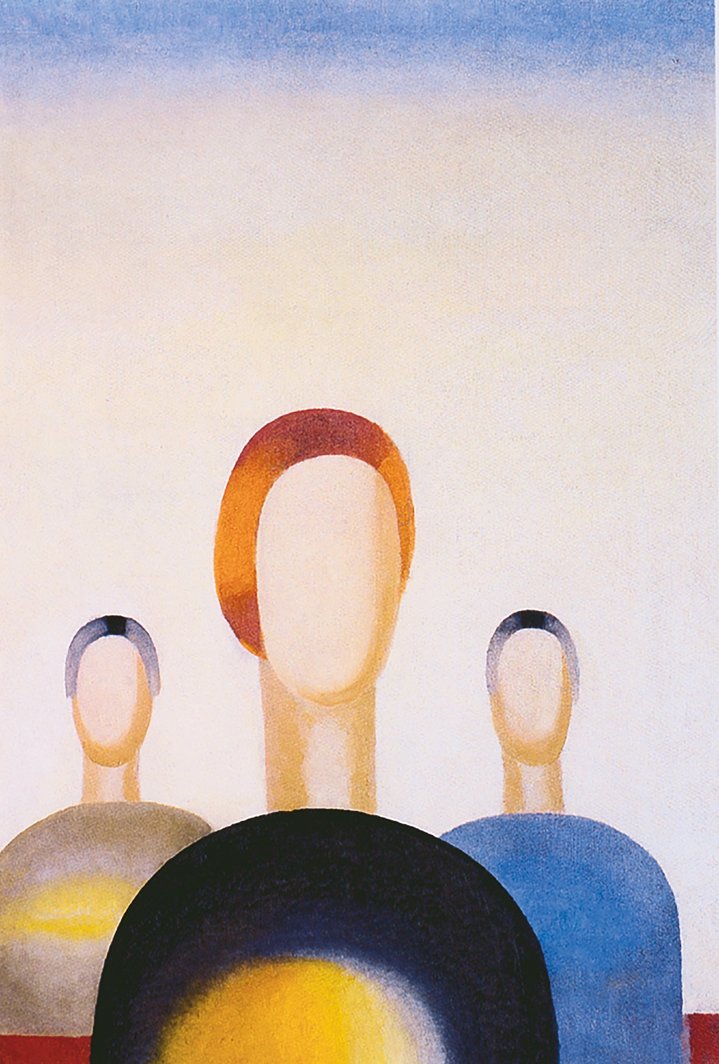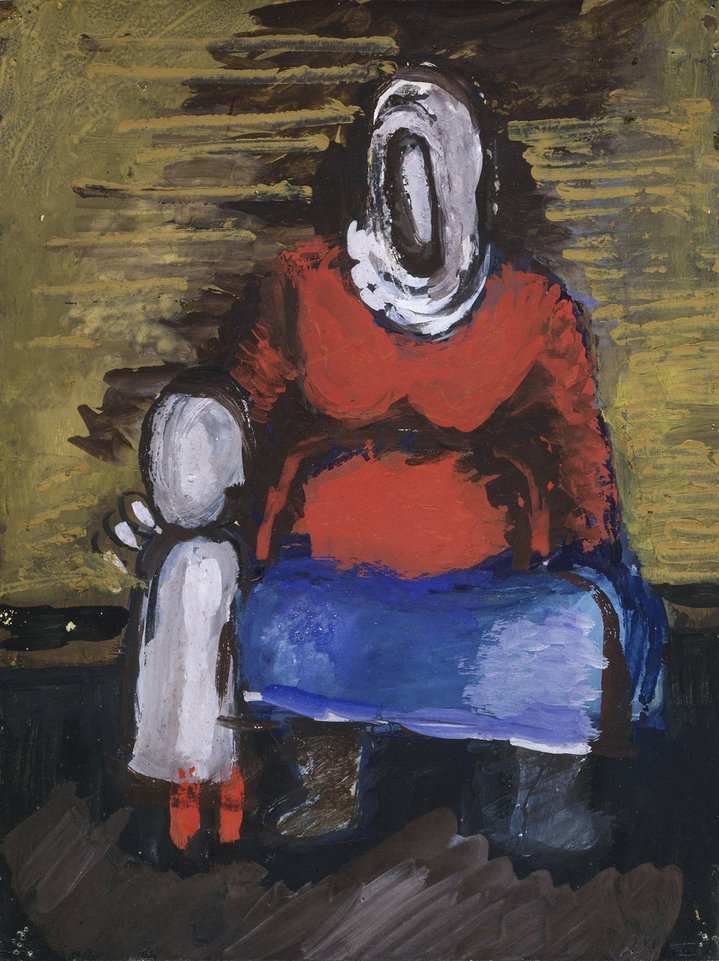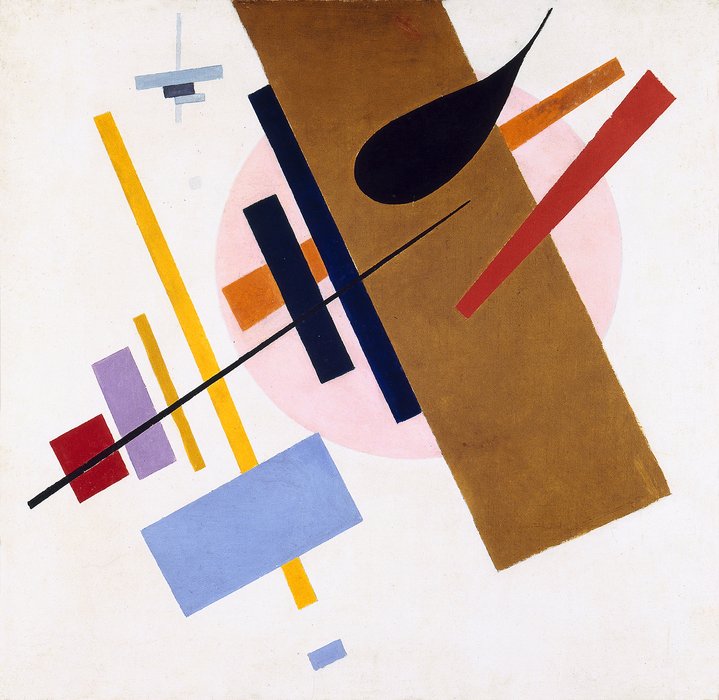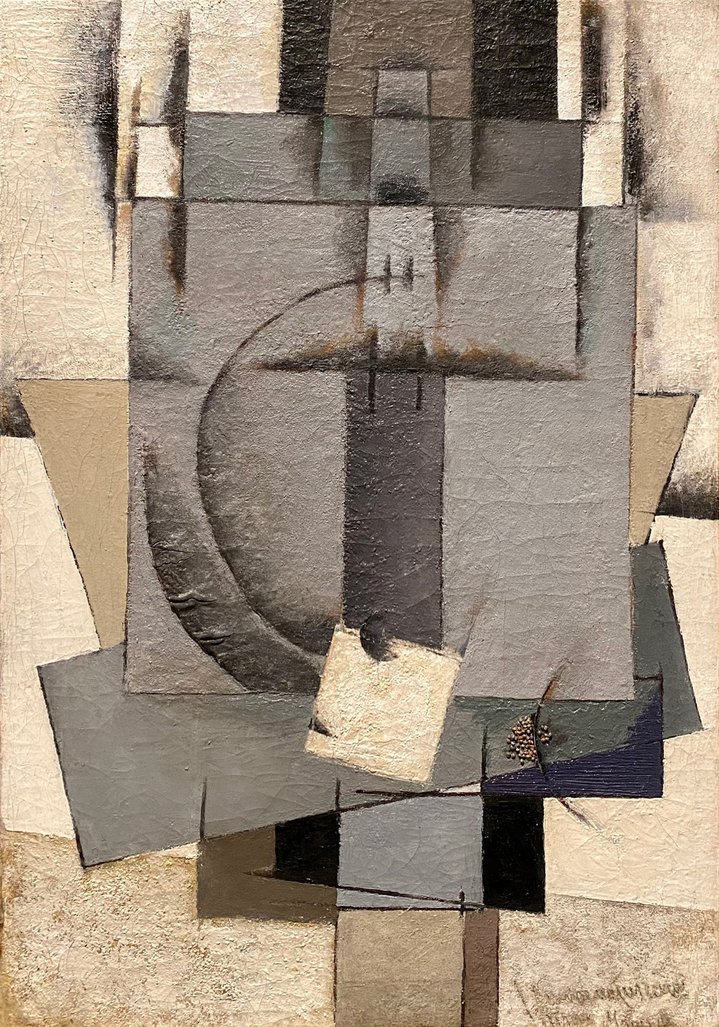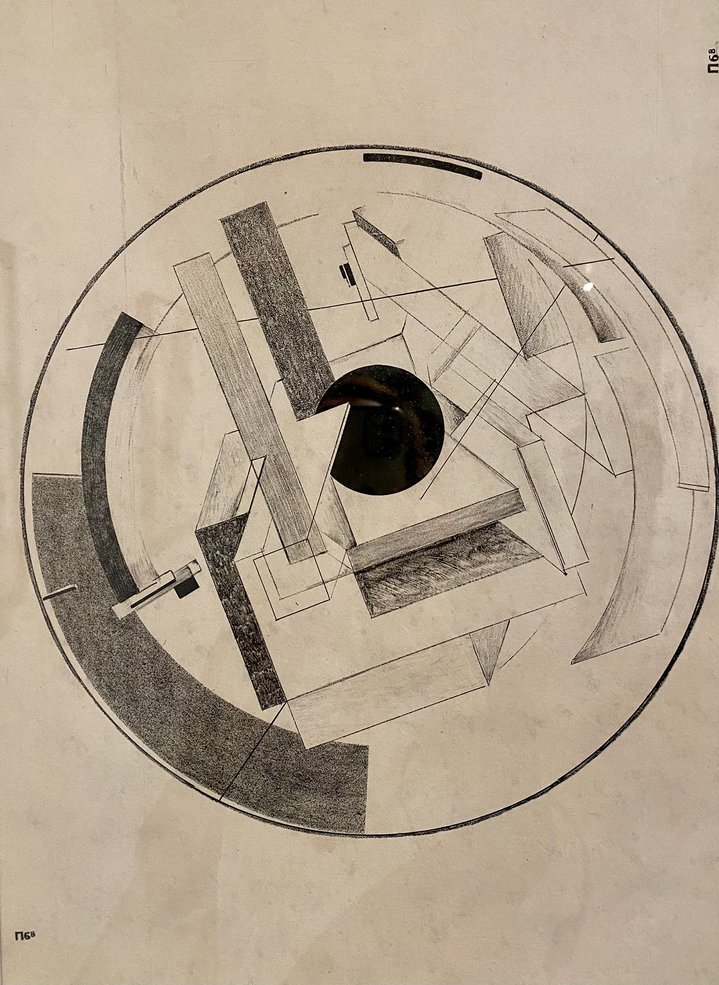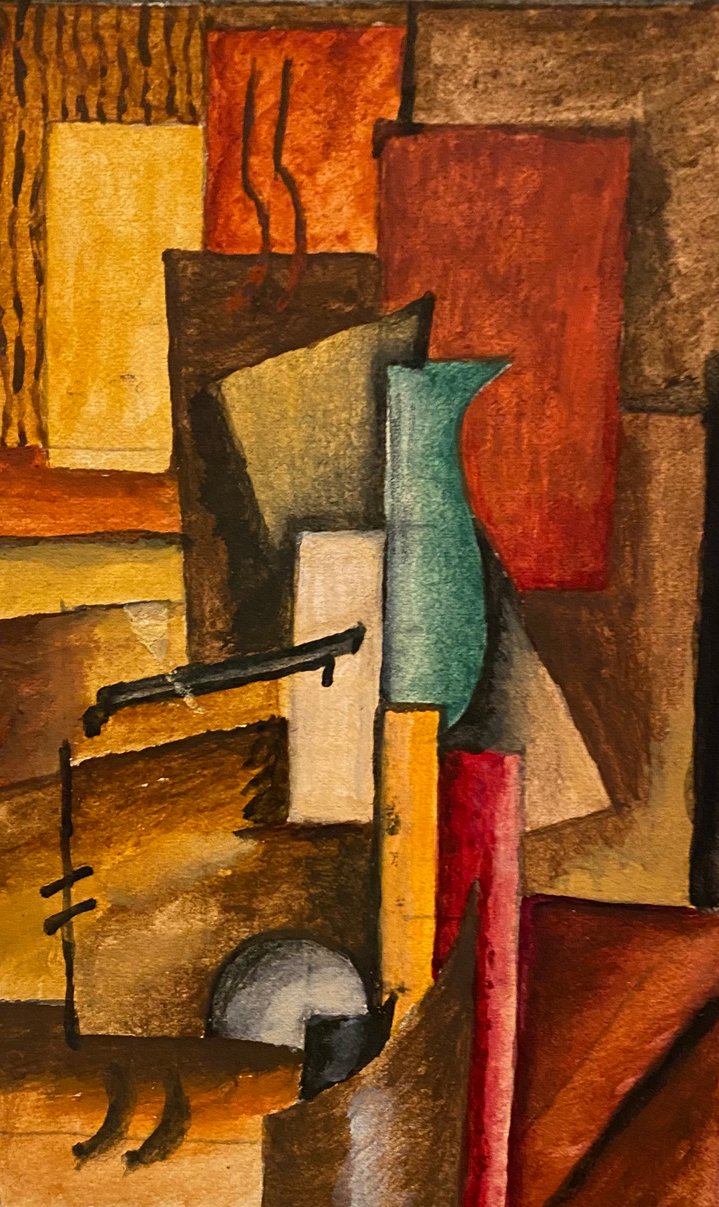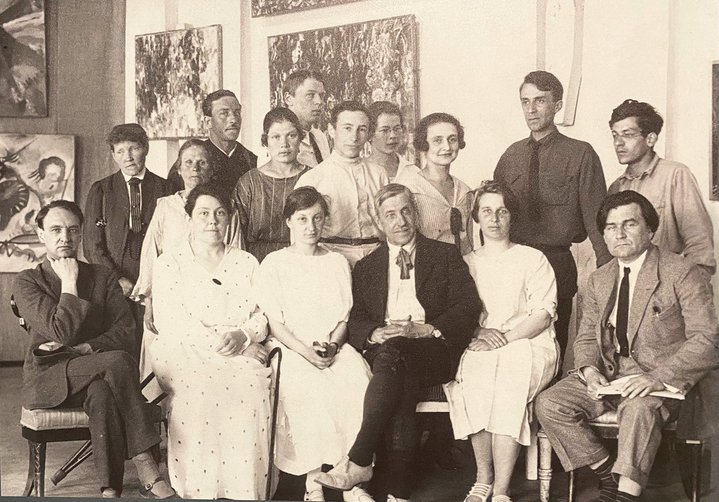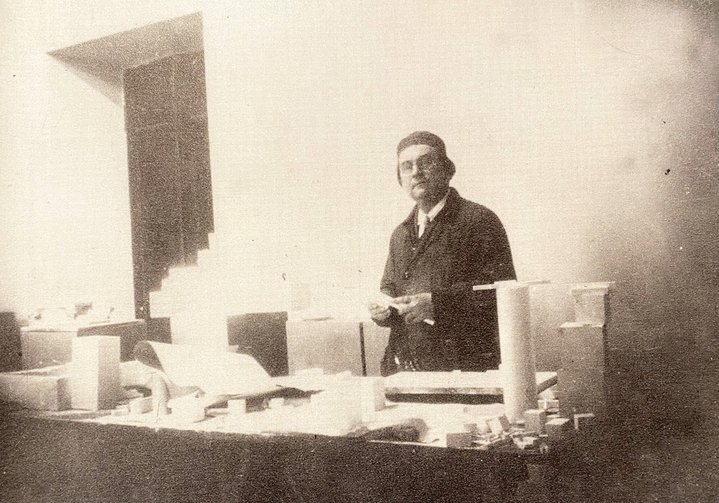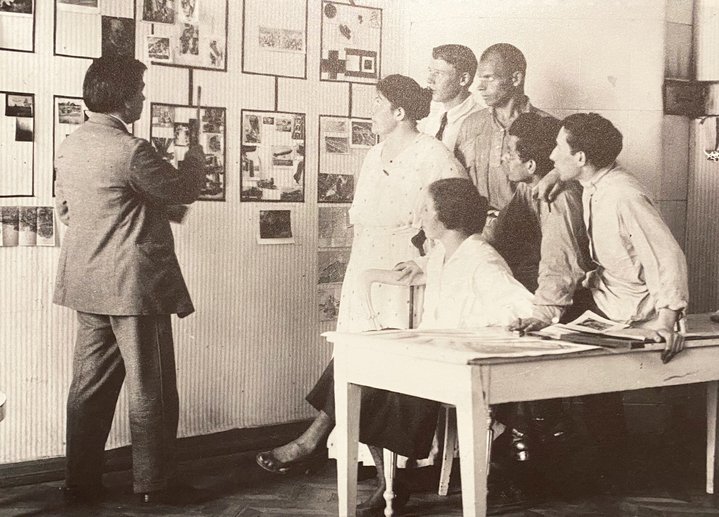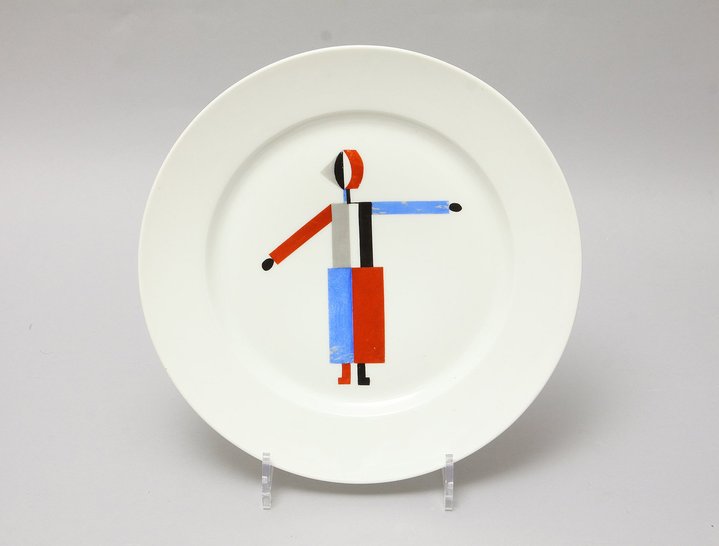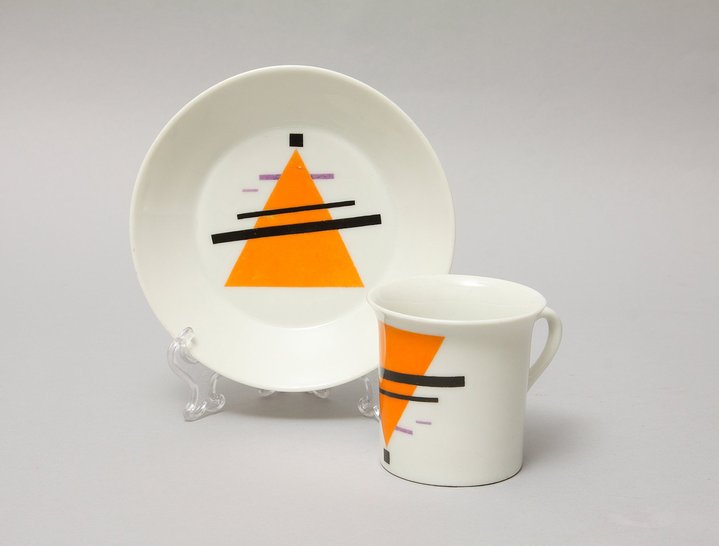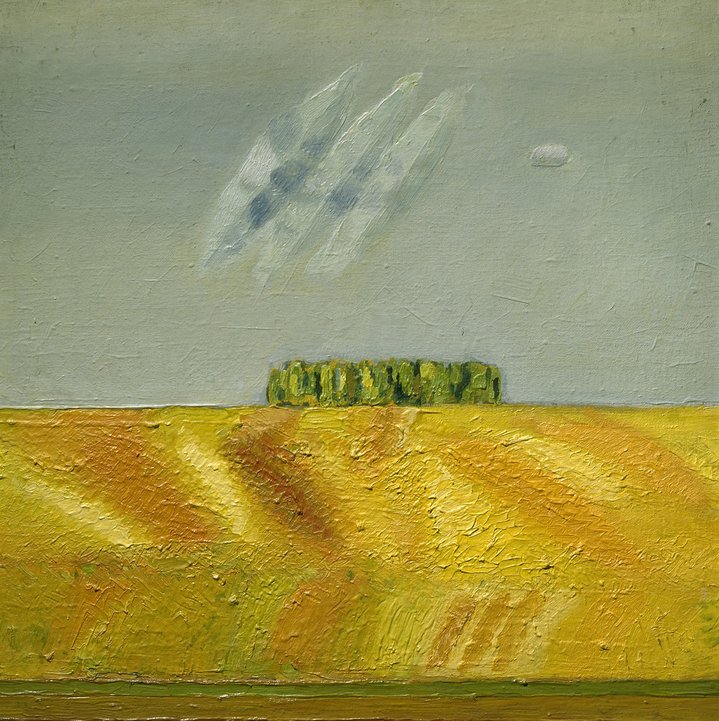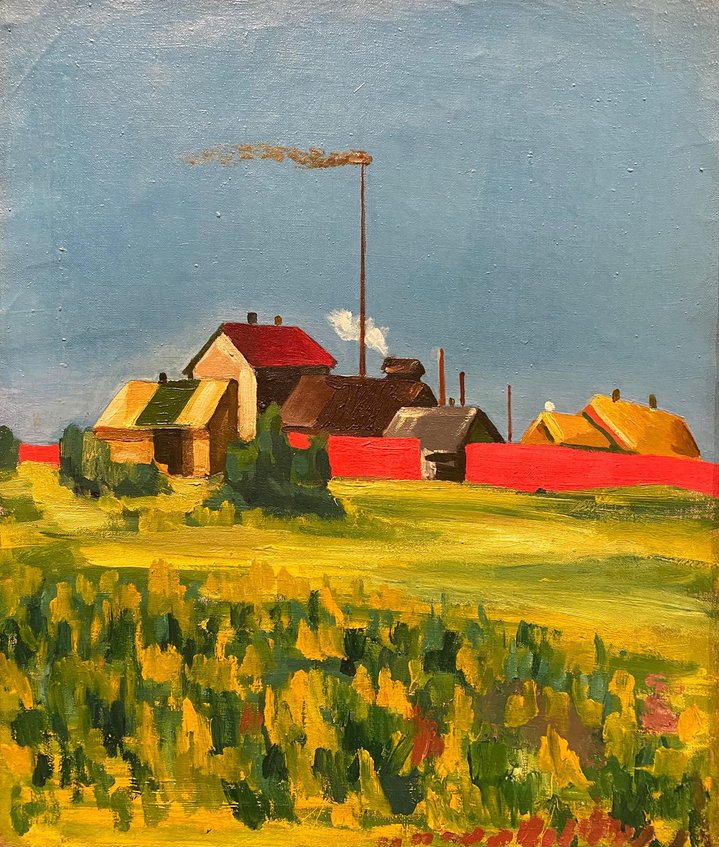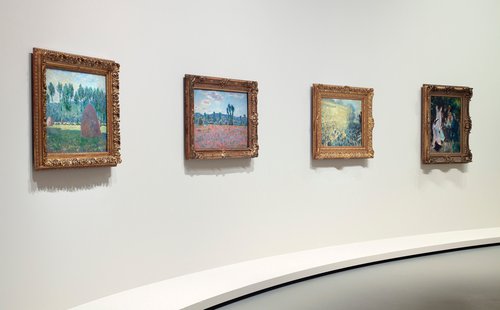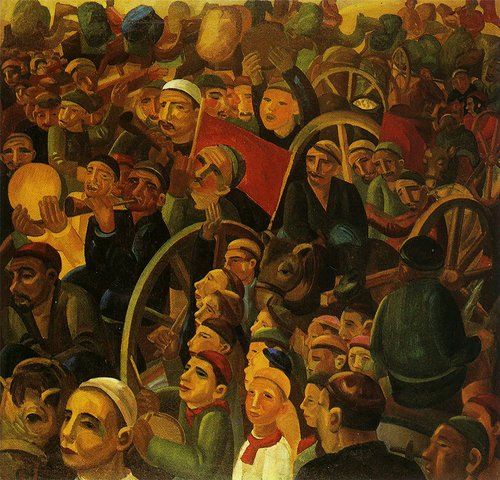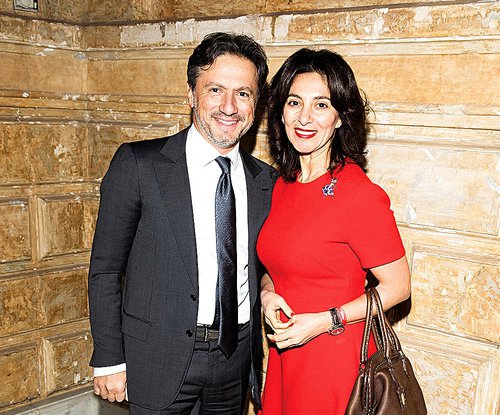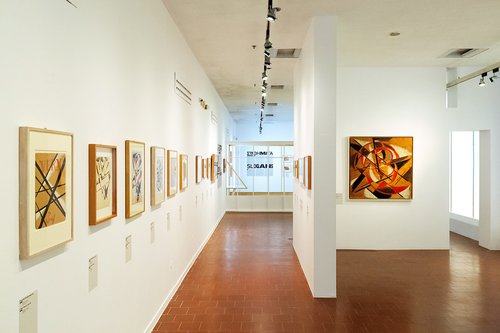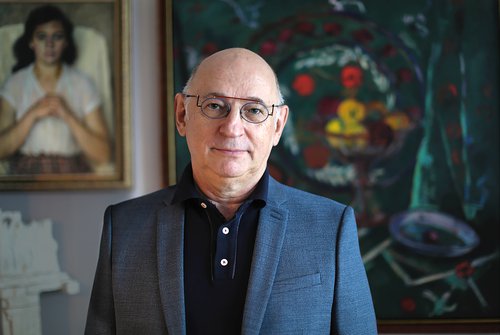An eye-opening Avant-Garde exhibition in Moscow

Konstantin Rozhdestvensky. Morning. Girlfriends, 1931. Cardboard, oil. 61.5x85.5 cm. Tomsk Regional Art Museum
The exhibition ‘The World as Objectlessness’ at Moscow’s Jewish Museum and Tolerance Centre lets us give a closer look at the often-overlooked final pages of the history of Avant-Garde in Russia.
Anna Leporskaya's (1900–1982) ‘Three Figures’ from the Tretyakov Gallery collection was a sensation at the new exhibition at the Jewish Museum and Tolerance Centre in Moscow. She is on the advertisement and on the cover of the catalogue. During the vernissage people took selfies asking ‘Is she the one?’ The reason is not the image itself, paintedafter Malevich, but the fact that in December 2021 Alexander Vasilyev, a security guard at the Yeltsin Centre in Ekaterinburg, drew eyes on the featureless faces of Leporskaya's characters with a pen.
The first thing visitors do is to run to the Leporskaya to check if the eyes are still there. The restoration done by specialists from the Tretyakov Gallery left nothing to chance. The painting has been masterly restored, so masterly that even the spot where the pen damaged the paint layer is impossible to see now without a magnifying glass. The most high-profile vandalism incident of 2021 resulted in a marketing campaign.
This high-profile incident overshadowed the exhibition, the first edition of which was held in Ekaterinburg. The second edition has opened in Moscow with some works from private collections having been reduced. Whether this was due to vandalism in the Urals or the Russian-Ukrainian conflict, the decrease did not make much difference. The exhibition is interesting primarily because of works from provincial state museums in Russia and Belarus, such as Belarussian Vitebsk, Russia’s Vyatka, Krasnodar, Tomsk, Yaroslavl, in addition to the major museum collections in Moscow and St. Petersburg.
The concept is around showing works by artists who are little known to the non-specialist, those who ‘came to the table when dinner had been eaten’, in the words of writer and critic Yury Tynyanov about the Young Formalists. The second generation of the Avant-Garde are artists who are sometimes impossible to see in the shadow of the patriarchs. Although many of them are brilliant, with their own ideas, language, and method such as Pavel Basmanov (1906–1993), Nikolai Evgrafov (1904–1941), Eduard Krimmer (1900–1974), Xenia Ender (1895–1955), and others.
Often dictatorial, they formed an addiction in their pupils, similar to that of fans of charismatic cults. ‘To fully understand Suprematist painting, one must... enter a 'sect' (the Unovis),’ said artist Nikolai Lapshin (1888–1942). Tarnished by ‘burning men’, neophytes were formed in dialogue and confrontation with the pioneers (Malevich was called a ‘burning man’ by his adept Lev Yudin (1903–1941).
The exhibition-commentary is a genre that is possible when all the main things seem to have been said. This fourth major group show of the Avant-Garde at the Jewish Museum is the most successful in terms of display and takes into account the harsh criticism previously levelled against the floor to ceiling hanging or claustrophobic architecture. The exhibition marks the tenth year of the institution's history, the Jewish Museum having officially opened its doors on November 11, 2012. Previous exhibitions have claimed epic coverage of the theme, for example the 2019–20 Youth Union exhibition on the diverse association of Avant-Garde artists. This exhibition one shows the world of the Avant-Garde, seen as if through the eyes of a pupil of Malevich.
The nerve of the exhibition is Yudin's diaries. Lev Yudin started his studies in Belarus at the Vitebsk National Art School in 1918; in 1919 he joined the students of Kazimir Malevich and Vera Ermolaeva (1893–1937); in 1922 he followed his teacher to Petrograd (currently St. Petersburg) and from 1921 to 1938 kept diaries describing the artistic life of the era. This is why the exhibition unfolds from Vitebsk to Petrograd, from the self-portraits of Jehuda Pen (1854–1937), the founder of the Vitebsk school, to the ‘picturesque-plastic realism’ practiced by Lev Yudin and his fellows in Leningrad at the turn of the 20s-30s. This is Soviet Avant-Garde from its beginning to its end, and the end is connected to the beginning: Yudin departs from the old Realism of the Jewish shtetl to arrive at the new Realism of the thirties, having passed through the crucible of the Avant-Garde.
Obviously, had the pathway been, for example, the diary of Mikhail Tsybasov (1904–1967), a disciple of Pavel Filonov, the way would have been different, from Veliky Ustyug to Petrozavodsk via Petrograd-Leningrad. But the circle of Realism in Russian and Soviet art would have remained in its place. ‘Non-objectivity’ turned out to be a brief bright episode, a flash that forever scorched those in the hotbed of the explosion.
The World as Objectlessness. Birth of a New Art. Kazimir Malevich, Pavel Filonov, Marc Chagall, Anna Leporskaya and others
Curators: Andrei Sarabianov and Natalia Murray
Jewish Museum and Tolerance Centre
Moscow, Russia
October 20, 2022 – February 19, 2023






